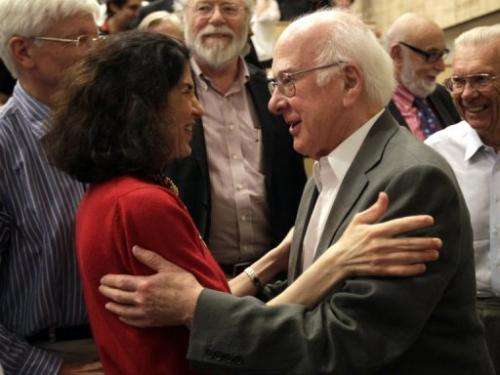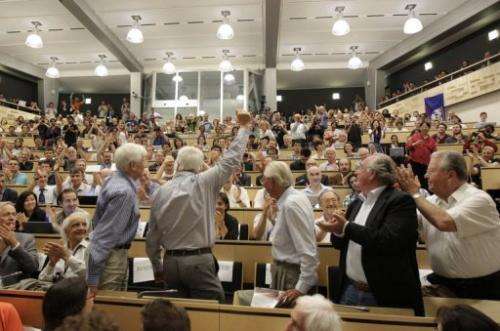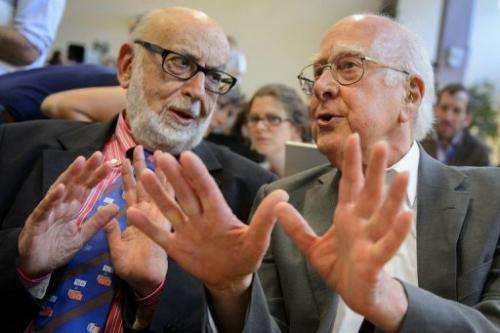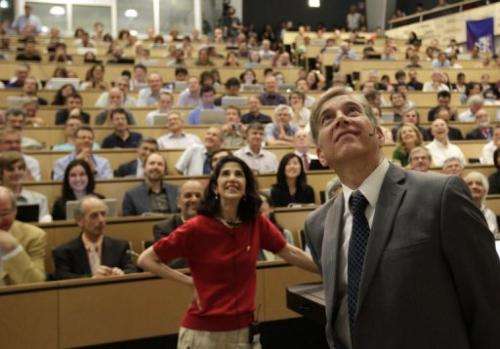Tears not ties as 'Higgs-like' particle found

Raucous applause more usually seen at a football match and tearful exchanges are not things you would associate with a meeting of the science community.
But this was no ordinary gathering, borne out by the hundreds of people who queued, some overnight with a duvet, to gain access to the 400-seater auditorium at CERN, as the European Organisation for Nuclear Research is known.
The centre on the French-Swiss border had not seen a day like it as physicists from all corners of the globe grappled for a front row seat at the milestone moment when the existence of a Higgs-like particle would be revealed.
A video leak on Tuesday ahead of the scheduled update had peaked everyone's excitement.
"They were snaking back and forth, the queue even reaching into the restaurant," said a CERN spokeswoman.

For the first time ever, the unusual tribe which is particle physicists found themselves with a global showcase for their work.
Yet not a single tie was in sight for the historic event.
If there was a dress code, it was open-necked shirt or a T-shirt, sometimes with long hair or a beard -- and one individual at the front of the auditorium even wore short trousers.
A group of teenagers from Preston, England, arriving for a tour of the home of the Large Hadron Collider could not believe the timing of their visit and badgered their teacher with questions.
Meanwhile journalists scratched their heads as they sought to get to grips with concepts like "GeVs" and "sigma" and how to begin explaining it to the average non-physics genius.

Such was the anticipated hunger of the world media that CERN commissioned a massive press team sporting orange "press" armbands and fluent in most languages.
There was silence as the institute's Joe Incandela gave a complex explanation of how his CMS team had established what he finally went on to utter: "We have observed a new boson."
Massive applause ensued as a theory first formulated almost 50 years ago appeared to be nearing reality and all eyes turned to the man behind it, 83-year-old Peter Higgs.
Higgs and Belgian physicist Francois Englert, 79, who separately contributed to the theory, smiled humbly at one another as those in the auditorium got to their feet to salute the pair.
"It's an incredible thing that it's happened in my lifetime," said Higgs, while a moist-eyed Englert paid tribute to Robert Brout, a fellow pioneer who died in 2011.
Incandela said the applause was "like at a football match".

It was hard to say whether the overriding feeling among scientists was one of relief that decades of work had proved fruitful or excitement at embarking on a journey that in many ways is only just beginning.
"I can only say that it's not for nothing that we have been looking for this particle for so many years," said a smiling CERN chief Rolf Heuer.
"It's a fantastic day -- it's a beautiful moment for physics, for Cern and it is a real beginning, because what we see, it looks like a Higgs boson, but not quite," said CERN research director Sergio Bertolucci.
For Oliver Buchmueller from CMS, one of the experiment programmes at CERN, who spent the last fortnight furiously checking data, tiredness was only just beginning to give way to excitement.
"At the moment I'm very tired to be honest. It was two very long weeks of putting it all together but I think now that everything is over the excitment is kicking in now," said the expert from Imperial College London.
"It's a major event and many of my colleagues and me personally have invested years to make sure that this is going to happen."
(c) 2012 AFP





















